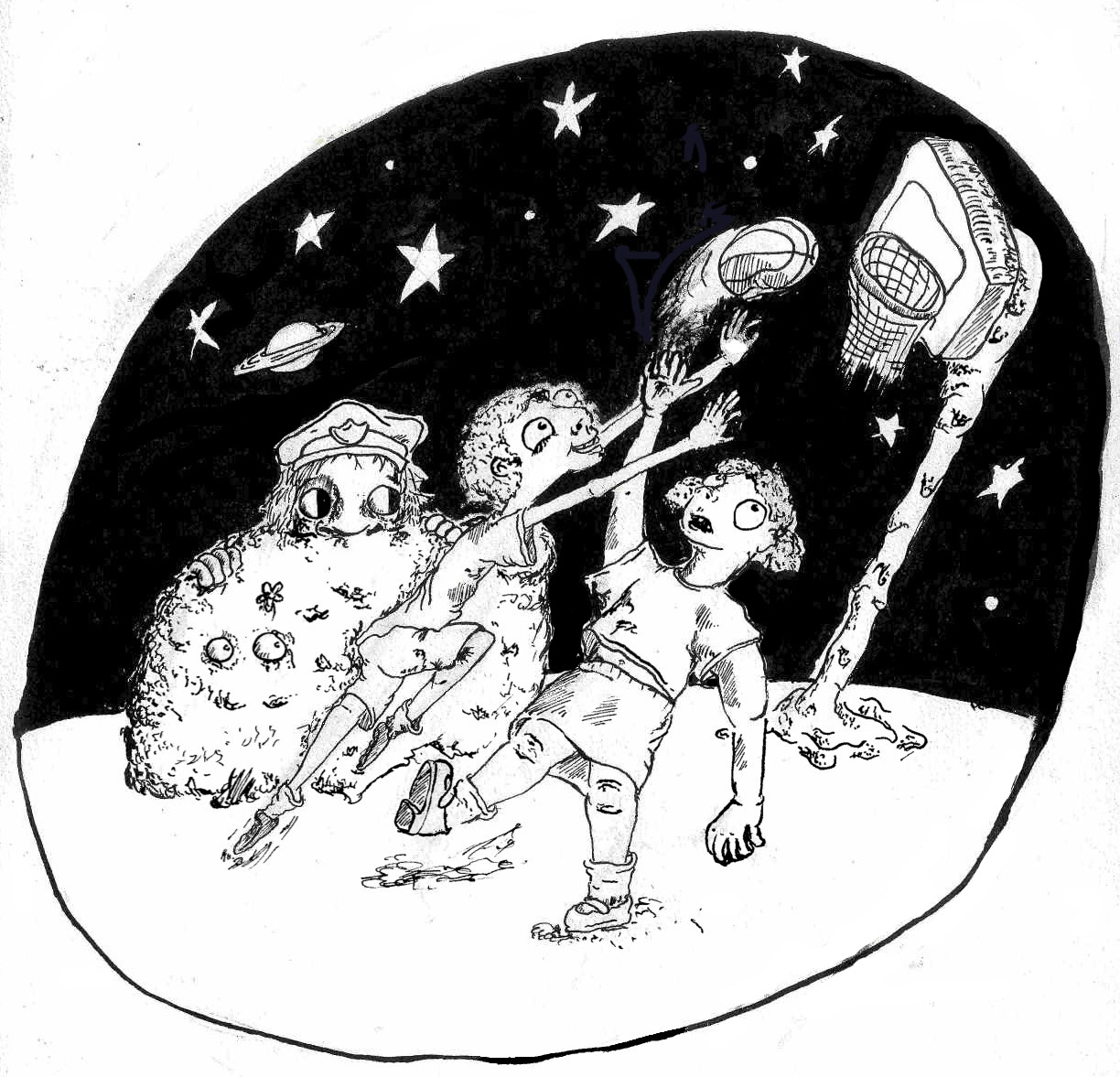
As the clock counts down to the end of the first quarter, a three-point shot by a player in red bounces off the rim and the blue team gains possession. But they do not have enough time to carry the ball back down the court, and the buzzer sounds just as their Hail Mary from half-court falls short. The players hustle back to their respective benches, with the blue team up by four.
On this mild Friday night in November, Jackson Park’s gymnasium is filled with the clamor of basketball games, part of a weekly Chicago Parks Department league. In the bleachers, kids waiting to play in the next game cheer on and taunt their friends. Isaiah Johnson is waiting to play point guard for his team. He comes here every week, even though he does not live nearby. He does not mince words in explaining what he likes about the program. “It’s free tournaments,” he says.
Just the night before, there was a shooting at a gas station a few blocks away. But when asked whether he ever worries about violence in the park, Isaiah shakes his head. He feels safe here, in the Jackson Park field house, surrounded by his teammates and friends.
On other evenings, parks across the city can become sites of crime and violence. In an effort to reduce such crime and boost enrollment in Parks Department programming, the Chicago Police Department rolled out a new policing initiative this past November dubbed “Play Safe, Stay Safe.”
Under the “Play Safe, Stay Safe” strategy, twenty parks have received extra nighttime police patrols. Pairs of officers patrol in four-hour shifts during the gap between the departure of park staff and closing time. Officers are paid overtime, with funds from the Chicago Parks District budget.
The police department bills the initiative as an expansion of both existing police patrols in parks and their Operation Impact strategy. Since February, Operation Impact has put foot patrols of officers working overtime on the streets of twenty high-crime areas. According to CPD, murders have decreased by forty-four percent and shootings have decreased by forty-five percent in the target areas since the strategy was implemented.
But the September shooting of thirteen people at Cornell Square Park in Back of the Yards has brought violence in the South Side’s parks to the forefront of the city’s crime prevention efforts.
Though the police department has not announced which parks are receiving extra patrols, the list almost certainly includes parks on the South Side. “We haven’t disclosed the parks, because we don’t want to advertise where the additional officers will be,” CPD spokesman Adam Collins wrote in an email, just before the program began. “The parks were selected based on crime trends, and also based on needs as identified by the Parks District.”
Jackson Park’s sprawling 542.89 lakefront acres are currently patrolled seven days a week by off-duty police officers working as Park District security, as well as on-duty CPD officers for whom the park is part of their patrol area. The officers sign-in and make rounds by car. “We have pretty good coverage,” said park supervisor Bobbie Beckam. “During the week somebody might call off and I might miss one or two nights, but they’re always here on the weekends.”
There have been no incidents of crime or violence during Beckam’s one-month tenure as park supervisor. “So far, so good,” he hedged.
Another CPD initiative, Operation: Wake Up!, aims to encourage neighbors to reclaim their parks from gang violence through the organization of evening community events, like cookouts. Wake Up! events have been held successfully at Cornell Square Park and at Merrill Playground Park in South Deering, where three teenagers were shot in early October.
Beckam thinks both the parks department’s Friday and Saturday night teen basketball league, Windy City Hoops, and the additional police presence in Jackson Park, are helpful and complementary deterrents to crime. “I believe if you give youth an outlet, it’ll keep them from the mischief of the streets,” he said. “That’s what we’re doing and it’s working.”
Inside the Jackson Park gymnasium, a small crowd makes a claim to community, with their attention fixed on the basketball court. The boys who are playing are in wildly different stages of growth; one teen towers a foot about all the rest, a clear shooting advantage. The court, though dilapidated and lined by cheap blue maps, echoes with animated calls from the benches and bleachers. “Look alive!” “Get back!” “Keep your hands up!” “For real!”
